Clothes For Children With Autism

Understanding the Importance of Sensory-Friendly Apparel
Children with autism often experience sensory sensitivities that can make traditional clothing uncomfortable or even distressing. The right clothing choices can significantly improve their daily comfort, support sensory regulation, and promote independence. This article explores various adaptive clothing options designed specifically for children with autism, highlighting features, benefits, and resources available for parents and caregivers.
Sensory-Friendly Clothing Options for Children with Autism
What are some sensory-friendly clothing options for children with autism?
Children with autism often experience sensory sensitivities that make traditional clothing uncomfortable or overwhelming. Sensory-friendly clothing is designed to address these issues by prioritizing comfort and minimizing sensory overload.
One of the most common features is the use of soft, breathable fabrics like organic cotton and stretchable nylon spandex. These materials offer a gentle touch and allow for better movement, reducing discomfort during daily activities.
Additional design elements focus on eliminating tactile irritations. Garments are usually tagless, with flat seams and seamless fabrics to prevent itching and skin irritation. This helps children feel more at ease and less distracted by their clothing.
Specific products such as quiet hoodies equipped with sound-reducing tools, compression shirts, and joggers are popular choices. These items are made to support sensory regulation by providing gentle pressure or noise reduction, which can help children stay calm and focused.
Practical features also enhance independence and ease of use. Many adaptive clothes include easy-access components like side zippers or snap buttons, facilitating dressing and medical procedures. Built-in fidgets and loose, elasticated fits further promote comfort and sensory engagement.
There are many resources available, such as visual schedules and dressing tips, to help children adjust to wearing sensory-friendly clothing confidently. Overall, these design considerations help children with autism feel secure and comfortable, supporting their daily routines and interactions.
Benefits of Adaptive and Sensory Clothing for Children with Autism
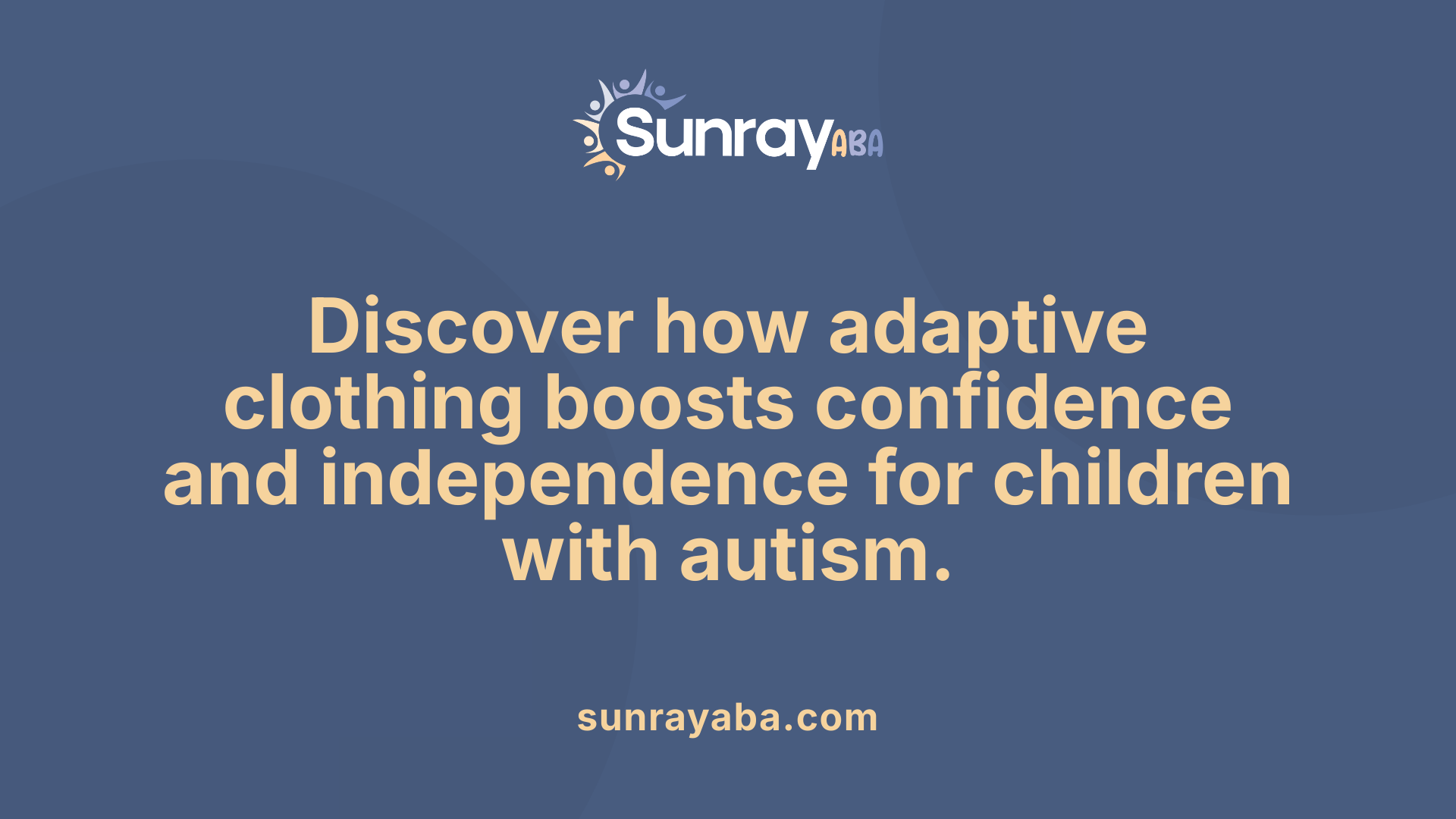
What are the benefits of adaptive and sensory clothing for children with autism?
Adaptive and sensory clothing provides numerous advantages for children with autism, significantly improving their daily experiences. These clothes are designed to enhance comfort and minimize sensory overload. They are often made from soft, itch-free, seamless fabrics like organic cotton that are gentle on sensitive skin.
One of the primary benefits is the facilitation of independent dressing. Features such as tagless labels, flat seams, large snaps, magnetic buttons, or Velcro make dressing easier for children and reduce frustration. These adaptations allow children to participate more actively in their routines, fostering independence.
Clothing with functional elements like adjustable waistbands, side zippers, or easy-open closures supports easier dressing and accommodates medical routines or devices. For example, bodysuits with snap buttons are convenient for diaper changes. Wide-opening footwear with elastic laces or hook-and-loop fasteners also promotes mobility and independence.
Furthermore, adaptive clothing encourages self-confidence and social inclusion. When children feel comfortable and free from sensory discomfort, they are more likely to participate in social activities and daily routines. This clothing supports emotional regulation by reducing environmental sensory triggers.
In summary, adaptive and sensory clothing enhances comfort, eases dressing, supports medical or routine needs, and helps children with autism to feel more confident and included in everyday life.
Features That Define Autism-Friendly Clothing
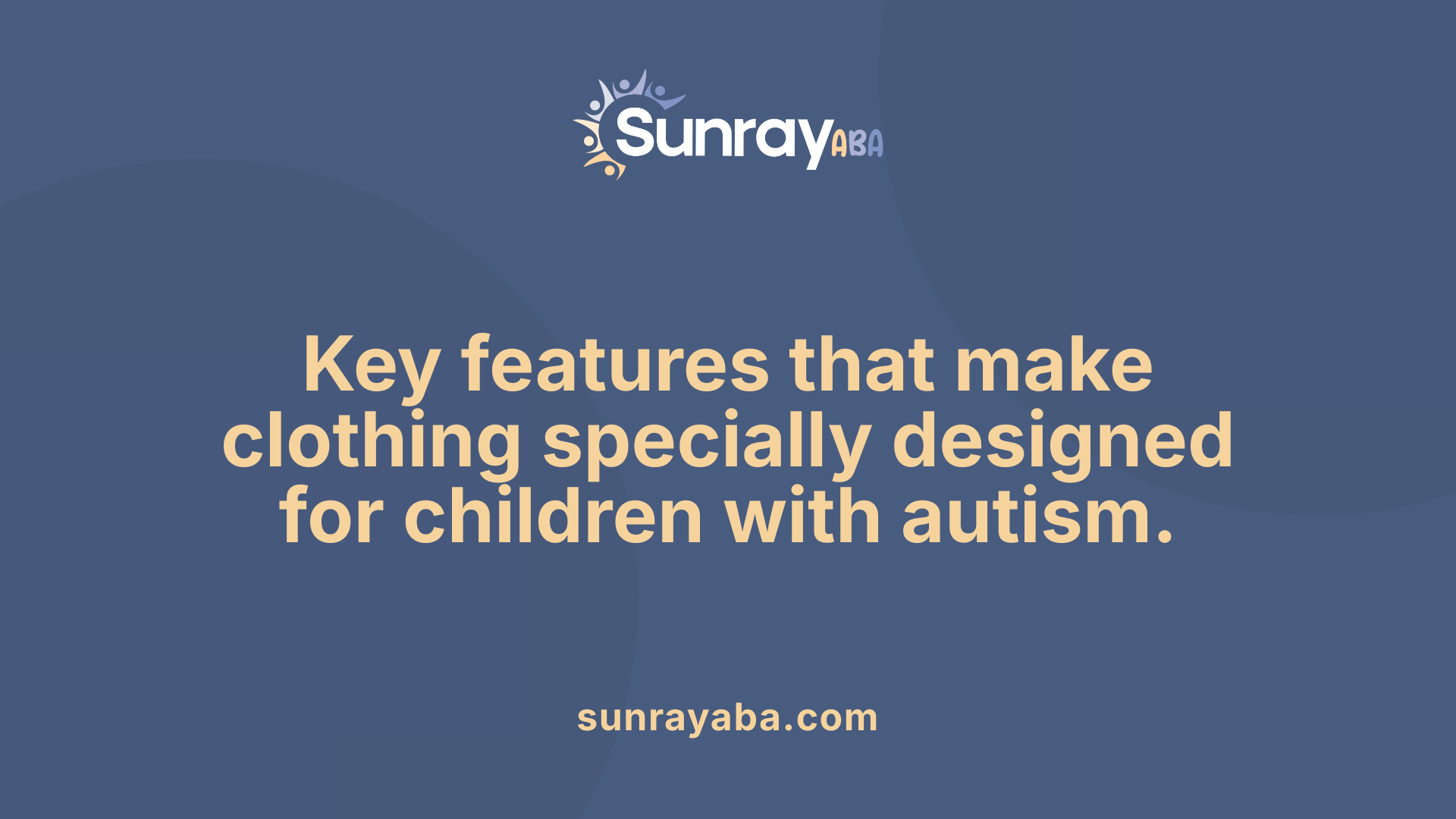
What features do autism-friendly clothing items typically have?
Autism-friendly clothing is specially designed to meet the sensory and comfort needs of children with autism. These garments often feature fabrics that are soft, breathable, and hypoallergenic, helping to minimize skin irritation and sensory overload.
Design elements play a significant role. Clothes are usually seamless or have flat seams to prevent chafing and discomfort. They also include tagless labels, eliminating any potential itching or irritation from tags. To ensure a better fit and ease of dressing, many of these clothes have adjustable features such as elastic waistbands and easy-on closures like snap buttons or side zippers.
Minimalism is another important aspect. The clothing typically showcases simple, solid colors and minimal patterns, reducing visual overstimulation and helping children feel more at ease in various environments.
Certain brands prioritize features like organic cotton fabrics and itch-free materials, making these clothes suitable for children with sensitive skin. Additional accessories such as weighted vests, sensory scarves, and fidget-friendly items are often available, further supporting sensory regulation.
Overall, autism-friendly garments aim to boost independence, reduce sensory discomfort, and promote a sense of calm, helping children better navigate routine activities and social settings.
| Feature | Description | Purpose |
|---|---|---|
| Soft, breathable fabric | Made from hypoallergenic, organic cotton blends | Comfort and skin sensitivity |
| Seamless or flat seams | No chafing or irritation | Reduce tactile discomfort |
| Tagless labels | No itchy labels or tags | Prevent irritation |
| Adjustable closures | Side zippers, snap buttons, elastic waistbands | Easy dressing and better fit |
| Minimalist design | Simple, neutral colors and patterns | Minimize visual overstimulation |
| Specialized accessories | Weighted vests, sensory scarves, chewies | Support sensory needs and self-regulation |
This thoughtful design approach ensures that clothing not only feels good but also enables children with sensory sensitivities to stay comfortable and confident throughout their daily activities.
How Clothing Supports Sensory Sensitivities and Self-Regulation
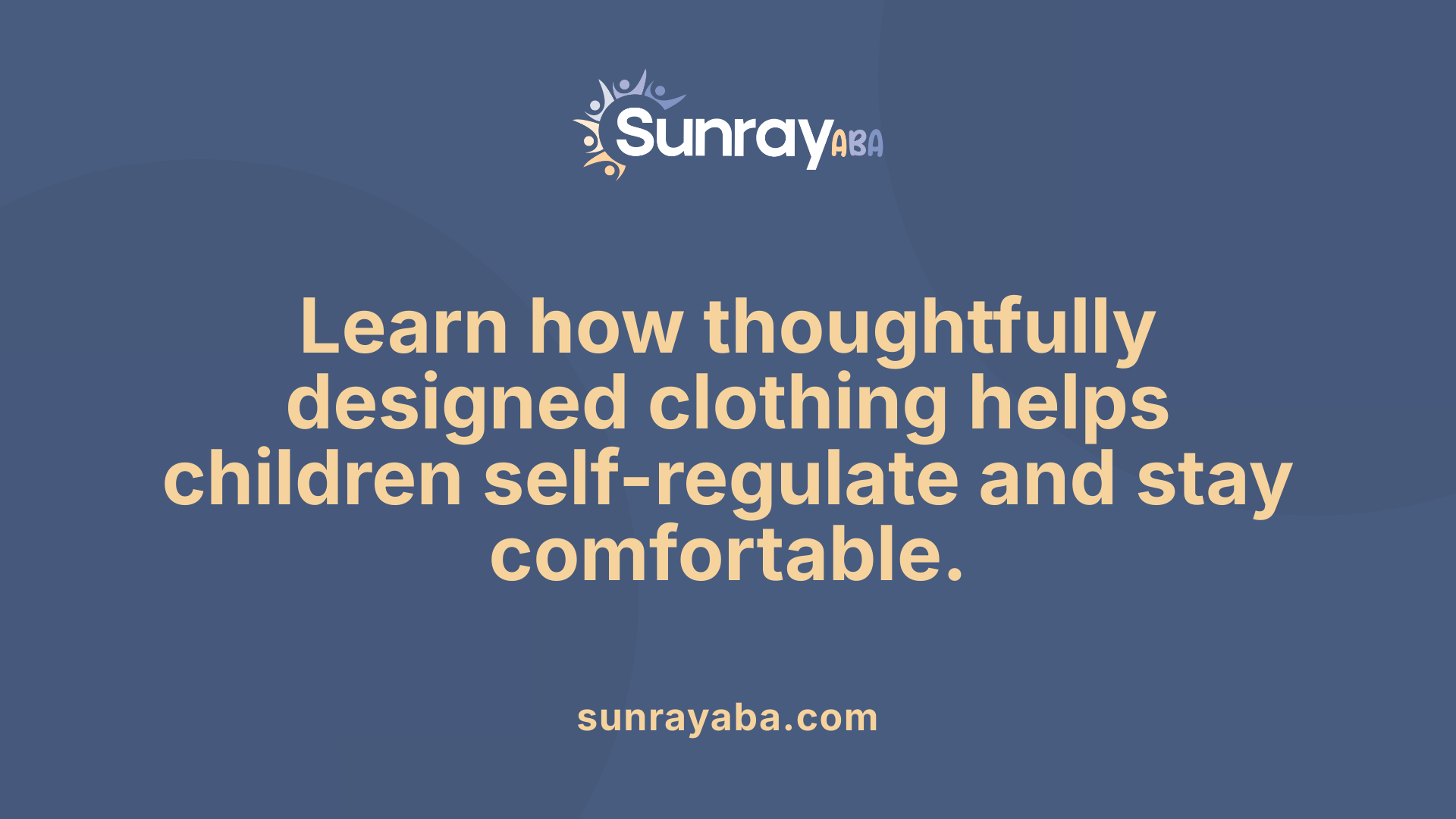 Clothing plays a crucial role in helping children with sensory sensitivities and autism to self-regulate and feel comfortable throughout their day. Sensory-friendly garments are thoughtfully designed to reduce discomfort caused by tactile sensitivities, using soft, breathable fabrics like organic cotton that are gentle on sensitive skin.
Clothing plays a crucial role in helping children with sensory sensitivities and autism to self-regulate and feel comfortable throughout their day. Sensory-friendly garments are thoughtfully designed to reduce discomfort caused by tactile sensitivities, using soft, breathable fabrics like organic cotton that are gentle on sensitive skin.
Features such as seamless construction and tagless labels eliminate any rough textures or irritations that could overwhelm a child. These clothing options often include adjustable elements like side zippers or snap buttons, making dressing easier and fostering independence.
Beyond comfort, clothing can serve as a tool to promote routine and reduce anxiety. For example, familiar garments that are easy to wear help establish predictable patterns, which are comforting for many children in the face of change. This predictability can decrease resistance to dressing and transitions, making daily routines smoother.
Incorporating sensory tools directly into clothing – such as built-in fidgets, calming textures, or weighted components – can further enhance self-regulation. Weighted vests or shoulder pillows provide calming input, helping children stay focused and relaxed.
Creating a predictable sensory environment involves consistent use of sensory-friendly apparel paired with visual supports like schedules or simple dressing tips. These strategies foster confidence and independence, enabling children to approach daily challenges with less stress.
Overall, thoughtfully designed sensory clothing and accessories support children’s comfort, emotional regulation, and personal expression, encouraging greater participation and well-being.
Guidance for Parents in Choosing Appropriate Clothing
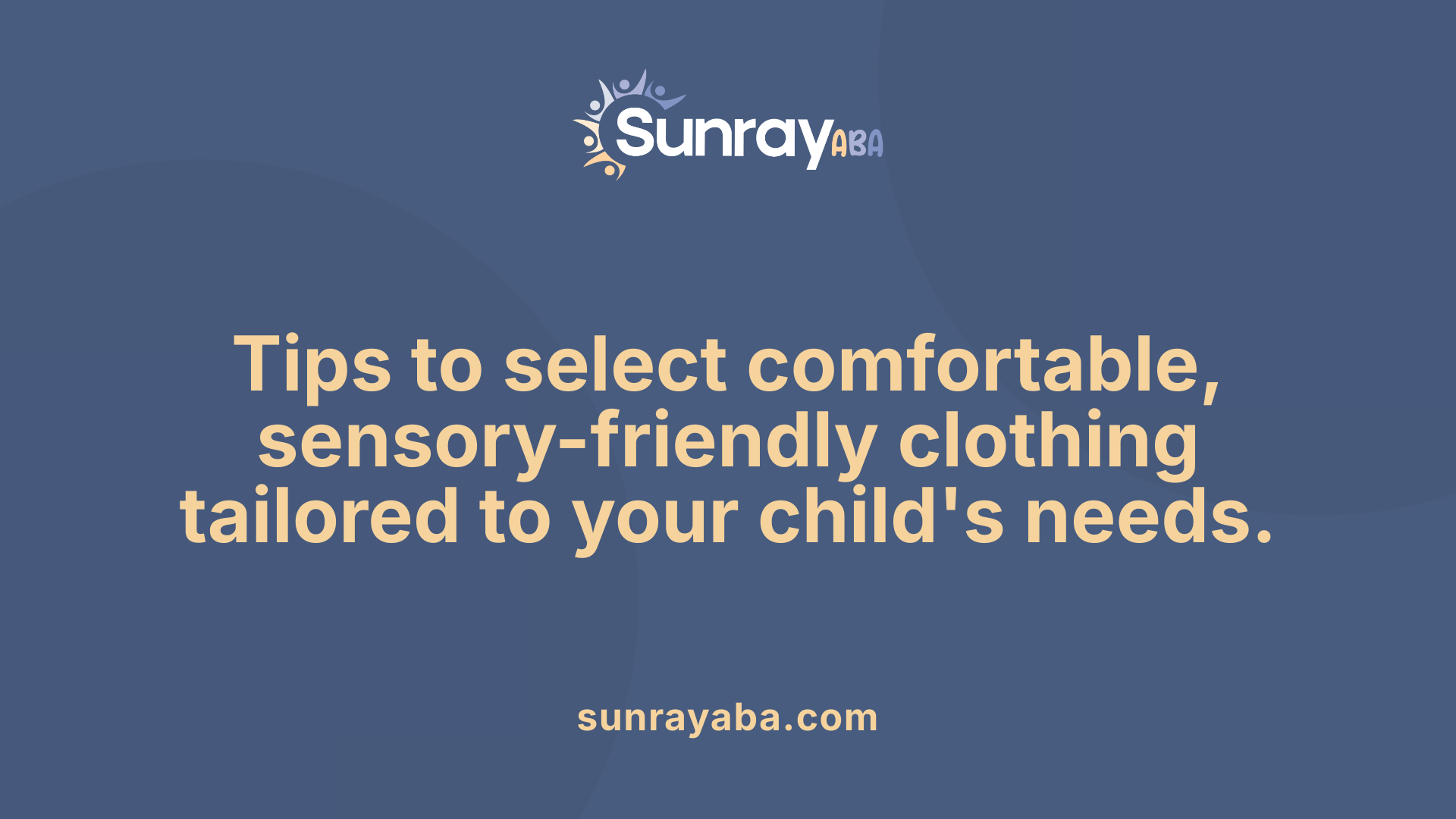
What should parents consider when choosing clothing for children with autism?
When selecting clothing for children with autism, it is crucial to prioritize comfort and sensory-friendly features. Clothes made from soft, organic cotton blends with seamless or tagless designs help minimize tactile irritation, reducing discomfort often caused by itchy or rough fabrics.
Understanding the child's specific sensitivities is essential. Some children may resist tags, seams, or certain textures, while others may be overwhelmed by bright colors or complicated fastenings. Adaptive options like magnetic or Velcro closures, side zippers, and easy-on features can facilitate dressing and support independence.
Using visual supports such as visual schedules or simple picture cues can prepare children for dressing routines, easing anxiety and encouraging cooperation. Planning outfits ahead of time maintains routine stability and minimizes last-minute dressing stress.
Furthermore, selecting weather-appropriate clothing and adapting outfits for different environments are vital. For example, breathable compression shirts, weighted vests, or sensory scarves can provide calming input and comfort.
By combining practical features with emotional support strategies, parents can choose clothing that addresses sensory needs, supports comfort, and promotes positive dressing experiences. This holistic approach helps children feel secure and confident, fostering independence and social participation.
Commercial Brands Offering Adaptive Clothing for Children with Autism
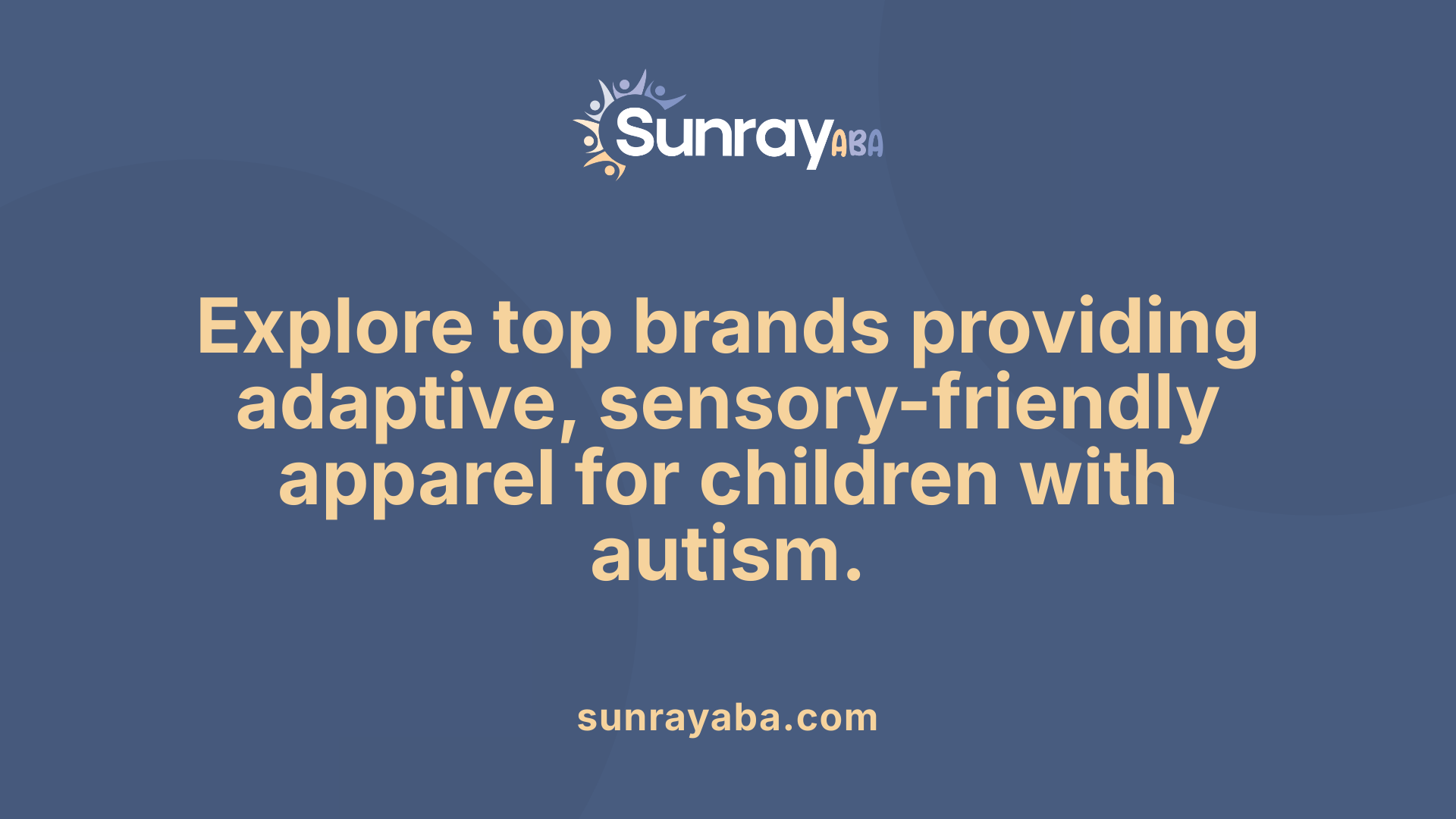 Are there commercial brands that offer adaptive clothing for children with autism?
Are there commercial brands that offer adaptive clothing for children with autism?
Yes, numerous well-known brands and specialized companies provide clothing options that cater to the sensory and practical needs of children with autism. These brands focus on making dressing easier and more comfortable while minimizing sensory triggers.
Target is a prominent retailer with a dedicated 'Sensory Friendly: Kids’ Adaptive Clothing' section on its website. Their clothing line features items like polo shirts, T-shirts, dresses, pants, leggings, and shorts, all designed to be seamless, tagless, and made of soft, organic cotton-blend fabrics. Many pieces include easy-on features such as side zippers and snap buttons, helping children dress independently and comfortably.
Specialized brands like Sensory & More and Sense-ational You produce garments specifically with sensory sensitivities in mind. Their clothing often features flat seams, elastic waistbands, and tactile-friendly materials, along with accessories such as weighted vests, caps, and vests that provide calming sensory input.
Kozie Clothes creates autism-specific apparel including plain, non-stigmatizing compression shirts and weighted vests made from breathable, stretchable fabrics that are gentle on sensitive skin. Smart Knit Kids specializes in seamless, soft socks with non-binding tops to prevent slipping and indentation, ideal for children with touch sensitivities.
Other brands like Calm Wear develop clothing such as bodysuits with snap buttons for simple diaper changes, catering to children who are not toilet trained or may inappropriately remove clothes. Fun and Function offers weighted and compression clothing including vests, neckties, and caps to aid sensory regulation.
The overall goal of these brands is to create functional, comfy, and sensory-friendly clothing options that support independence and comfort, while also reducing the stress often associated with dressing for children with autism. Many incorporate innovative features to help make everyday routines less troubling and more manageable.
| Brand Name | Product Types | Special Features | Suitability |
|---|---|---|---|
| Target | T-shirts, dresses, pants, shorts | Seamless, tagless, easy-on closures | General sensory needs |
| Sensory & More | Vests, caps, weighted clothing | Flat seams, weighted items, calming accessories | Sensory processing support |
| Kozie Clothes | Compression shirts, vests | Non-stigmatizing, breathable, stretch fabric | Autism-specific apparel |
| Smart Knit Kids | Socks | Seamless, non-binding tops, soft materials | Touch sensitivities |
| Calm Wear | Bodysuits, snap clothing | Snap buttons, accessible for diaper changing | Non-toilet-trained children |
This variety of options demonstrates a broad commitment within the marketplace to help children with autism feel comfortable, secure, and independent in their daily dressing routines.
Empowering Children and Supporting Families
Choosing the right clothing for children with autism involves understanding their unique sensory needs and selecting garments that promote comfort, independence, and self-confidence. With a variety of sensory-friendly and adaptive options available from dedicated brands and retailers, parents and caregivers can find suitable solutions that support daily routines and enhance quality of life. Education and resources, including visual supports and dressing tips, further empower families to create positive dressing experiences. Embracing these thoughtful clothing choices helps children with autism navigate their environments with greater ease and confidence, fostering greater inclusion and emotional well-being.
References
- Sensory Friendly Clothing | Autism & Adaptive Clothing | · Sense ...
- Sensory Friendly : Kids' Adaptive Clothing - Target
- Best Autism Apparels for Kids on the Spectrum
- Autism and clothing issues
- Super soft sensory-friendly clothing without tactile seams or labels
- Special Needs Clothing | Adaptive Clothing & Accessories for ...
- How Does Sensory-Friendly Clothing Help a Child with Autism